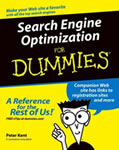Laura Quinn posted a great piece on the Idealware blog recently about what you get for your money when building a web site. We get questions all the time about how much an organization should budget for a new site, and what you get for each step up. We all know dollars are scarce, and it’s important to be able to make the case for why you should or should not budget a certain amount for your site.
First, let’s talk about the variables which influence the cost of a site:
- Design — less expensive sites offer little or no graphic design flexibility. Choose a template, a color, and drop in your logo. Moderate sites offer more customized and creative design services, and more expensive sites offer more detailed design, and may present multiple design concepts to choose from.
- Content Management — license of a CMS is usually included in moderate to higher priced sites. May not be in lower range sites. However, many people who save money here end up paying much more in per hour fees to update or change content on the site down the line. And content is key, so a CMS should be a non-negotiable on your list.
- Functionality — the more functions you want your site to serve, the more it may cost. However, there are many free or low cost third party widgets you can drop into your site these days to add forms, polls, video, donations, etc. Thus, make sure that the platform will support such things if you plan to go this route.
- Strategic Consulting — any web site is just a tool to help you achieve your mission and goals. Thus, you should think about what you will need, and how you will use towards these goals. A low cost web site project will be just simple execution of the site. A higher cost project will include more consulting, strategic guidance, recommendations and education throughout the process to help you use the tools more effectively. Some will also offer ongoing availability for such assistance through an annual support contract.
- Support — a low end site will likely leave you on your own once it’s launched. A higher cost project will offer phone and/or email support should you have tech support questions or need guidance after launch.
- Hosting — some vendors offer hosting with their site development, and others require you to have the site hosted yourself. Though these costs are often not huge, it’s important to budget for a service that updates their servers regularly, offers 24/7 server monitoring should something go down, automatic and regular back ups, and security features to guard against hacking (there have been a small number of anti-semitic web site hacks in the past few years on synagogue sites that were not well protected).
Finally, when budgeting for such a project, don’t forget to add in the costs for the staff time to create (and/or re-purpose) content and post it on the site, and for managing your broader social media strategy if you have one (Facebook, blogging, etc.). We find this cost is often overlooked in the planning stages, but is critical to get a return on your investment and to use the available tools to their best potential.
The Idealware post offers brief descriptions of what you can expect for $1K, $5K, $15K, $50K and $100K. How did you weigh the costs and benefits to determine your web site design budget?










